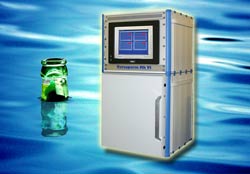

The marine environment is noted for an atmosphere that involve large amounts of salt water and hydrocarbons. Not only are these extremely efficient at creeping in to places they shouldn't be, but also their vapours have particularly high penetrative powers. Not only can they pass through many seals and enclosures, but they can also penetrate through the walls of many components and systems.

The Versaperm range of equipment is ideal for the task of measuring the permeability rates with which a range gases including hydrogen, water vapour, oxygen, solvents and CO2 pass through materials in these safety-critical marine application.s
Our new range of permeability measurement equipment equipment is fast and reliable– producing results that are accurate in the parts per million range, (parts per billion with some gases). Measurements can take from as little as 30 minutes for some packaging samples.
A wide range of variations and sensors are available, depending on the specific application. Multi-chamber systems allow measurements to be produced on several samples at a time and different designs and clamping systems cater for various sample types.
We also offer a laboratory testing service for companies who test too few samples to make the purchase of equipment viable. Where required by legislation our testing service also includes gravimetric testing of sachets, pouches and other products/materials.
Water, Electronics, Boats & Enclosures
Adding water or petrol to electronics, or a variety of other maritime products is a recipe for disaster. So it’s critically important to ensure that liquids, and the invasive vapours they give off, can not get into any components, electronics or enclosures
The problem is that many of the seals which keep out water or hydrocarbons as liquids allow their vapours to pass through virtually unhindered – often rendering the seals virtually useless!
Click to find out more on measuring permeability for hydrocarbons
Click for information on the permeability of semi permeable membranes (Wikipedia)